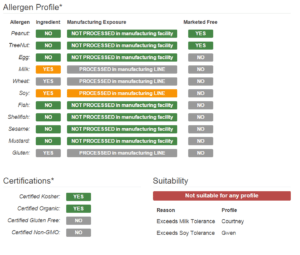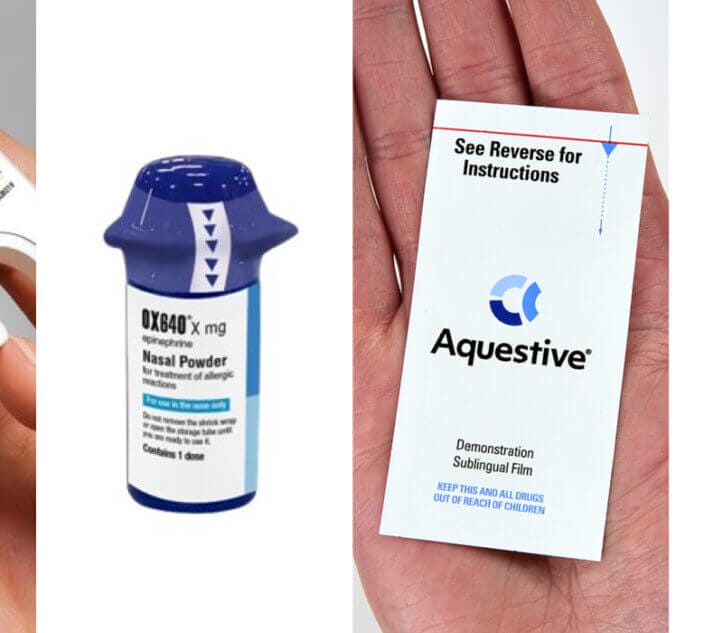When it comes to checking food allergens, the list of ingredients on the label doesn’t always tell the full story.
Even if a food doesn’t contain nuts as an intentional ingredient, could it have come into contact with nuts in the manufacturing process? Is the product made in the same facility as other products containing milk or wheat?
Sometimes the answer will be contained in a manufacturer’s precautionary warning or “may contain” statement. But as these warnings are voluntary, and not all food makers provide them. Since this is an important gap for the allergic consumer, the husband and wife team behind Snack Safely created Allergence, a free online portal that gets past the label to provide those with food allergies the full information they need to decide whether products are truly safe for their or their child’s diet.
“As with other families coping with dietary restrictions, we’ve been dealing a flawed U.S. allergen labeling system since our daughter was first diagnosed with peanut and egg allergies as a baby,” Snack Safely CEO Dave Bloom told Allergic Living. “We designed Allergence to provide the information we wish was on the label.”
The Food and Drug Administration has made it mandatory that manufacturers warn customers if any of the Top 8 allergens are used as ingredients. However, FALCPA, the U.S. food allergen labeling law, does not require companies to disclose whether their products “may contain” or are “manufactured in the same facilities as” food allergens.

Users can sign up to the free online portal at Allergence.com, create multiple profiles for loved ones with dietary restrictions, and then browse the products listed to see which items are safe to consume.
One of the first companies to apply for the program was Enjoy Life Foods, the popular free-from foods maker. “We believe we have a responsibility to be transparent,” Joel Warady, chief marketing officer at Enjoy Life Foods, said in a press release. “Our consumers rely on us for safe, great-tasting products that are gluten-free, free from the 8 most common food allergens, verified non-GMO and produced in a dedicated nut-free facility.” He sees participation in Allergence as “yet another avenue to exercise our commitment to transparency.”
While 37 companies – including SunButter, HomeFree, Candice Foods, and Tootsie Roll Industries – are available on Allergence, not all companies make the list.
“I’m surprised by the number of companies we have to turn away because their manufacturing processes are suspect, or they don’t have a clear accounting of the allergens processed at their facilities or in specific manufacturing lines,” said Bloom, whose company is best known for its downloadable “Safe Snack Guide”.
Allergence has 1,300 users and continues to expand, developing apps for iPhone and Android, creating new features, and adding more companies – although some companies are more challenging to bring on-board.
“We’ve approached some of the larger traditional manufacturers and are in the early stages with a few, but they’re like giant cruise ships that take a while to change course,” says Bloom. “We encourage our users and subscribers to contact the manufacturers of their favorite brands and ask them to join our Manufacturer Partnership. There’s no cost to do so and manufacturers receive free listings in our Safe Snack Guide and Allergence for all products that qualify.”
See more at: Allergence.com





